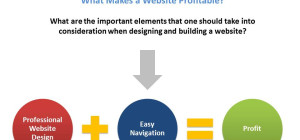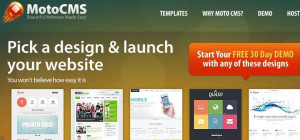 UX is a new age abbreviation of the term User Experience. Don’t ask me why it isn’t UE. I do not know the answer. It probably doesn’t sound cool enough as UX does. Or maybe it is a sign of our times when Extreme has become XTREME and EXPERIENCE has become XPERIENCE. Who knows, maybe down the line, these will be the standardized spellings used worldwide! After all, language is constantly evolving.
UX is a new age abbreviation of the term User Experience. Don’t ask me why it isn’t UE. I do not know the answer. It probably doesn’t sound cool enough as UX does. Or maybe it is a sign of our times when Extreme has become XTREME and EXPERIENCE has become XPERIENCE. Who knows, maybe down the line, these will be the standardized spellings used worldwide! After all, language is constantly evolving.
So, coming back to User Experience, or UX in short. UX, simply defined is exactly what its name points to- the overall experience of the user while interacting with a platform, be it a website or a mobile application. While mobile apps are the children of the future, by today’s standards, websites are rather old and the concept of UX is rather recent. However, that does not mean it is any less important. As websites have progressively acquired depth and substance, with ever-improving design techniques allowing for greater volume, they have also become individual mazes through which the visitor has to navigate.
Sites which are confusing and have a convoluted structure fail to hold the visitor as he/she feels helpless and irritated. As a rule, users like to be in control and ease of navigation plays a big role in defining the UX of a website. If the UX of a website is bad, then it might have a lot of visitors, but very few leads. On the other hand, a website with fewer visitors can trump the other one with greater conversion, thanks to better UX.
In this article, we will discuss ways through which one can improve his/her website’s UX to maximize the website’s potential.
- Mobile Friendly – The majority of the traffic generated on websites comes through handheld devices, which overwhelmingly means smartphones. In our minds, we have this neat distinction that apps are for phones and websites are for computers. However, in reality, a large chunk of visitors to most websites are smartphone users. Hence it is critical that your website is mobile friendly.
- Website Theme – Today, we have literally millions of website themes. So, the choice is hardly an issue. The choice is also critically important. While choosing a website theme, you need to ensure that the theme allows for smooth navigation and visitors in no way feel lost. The theme should also allow easy navigation on cell phones too, even on one-handed navigation.
- Navigation – Improving your web design doesn’t only mean a modern website theme, but improving your navigation as well. While you will probably hire a dedicated web designer to get the best website design, pay heed to the navigation as well. Ensure that you get specialists to prepare a proper wireframe and test it rigorously.
- Page Loading Time – While the time it takes for a website is crucial for a whole variety of things, it is absolutely critical when it comes to UX. If your page fails to load quickly, it will automatically turn away visitors. Slow page loading time will also prove to be a big disincentive for repeat visitors
- Use High-Quality Images – Using high-quality images will ensure that your website comes across as attractive and vibrant, all of which goes in creating a good UX. However, please use original images and avoid using stock footage.
- Use Videos – A two-minute video packs the same punch as a 500-word article. The visual medium is anyways stronger and videos will be a great value addition to your website. Apart from using video content, having video testimonials are a great way to impress possible customers.
- Improved CTA – A good, catchy CTA will not just boost sales, but will also enhance your website’s UX. A lot of people think that they need to keep the CTA subtle and are afraid to oversell. Let me tell you that in this day and age, visitors know exactly that as an organization or brand, the entire website is your elaborate courtship ritual. In fact, I will go on and say that visitors come to websites to get wooed and appreciate if it if you come across as serious and smart in your courtship.
- 404 Error Pages – You must test your website continuously during and after development to ensure that there are minimal cases of 404 pages. 404 errors show up when a link that the user has clicked or is trying to access either does not exist or is broken. While not having a 404 page is ideal, the reality is that every once in a while a user will come across the 404 error page. In such a scenario, why not use the 404 pages to enhance the UX. A dynamic 404 page helps in retaining the visitor on the website. .
- Using Listicles – An information can be given in many ways. Take this for example. An army regiment requires help from its backup troops stationed twenty miles away. So the commander of the regiment sends a long letter to the regiment commander which goes on for a full page, in which he provides details about the present situation, current status of men and ammunition, etc… Now consider this wire that he could have sent instead- POSITION WEAK. NEED URGENT HELP. “COORDINATES”. It is not necessary to write pages to effectively convey the information. Brevity is mostly preferred. Listicles or bullet points help convey a multitude of information and features at once and with economy of space and effort. It allows the visitor to take in a lot of information in a stress-free manner, improving UX.
- Typography – Lastly, the fonts and size of fonts that you use also matters. Some fonts are easier on the eye and it takes minimal effort to acquire content in such fonts for the user. The whole exercise is stress-free. When you hire dedicated web designers, you can instruct them to “jazz up” the website by using typographical designs which look extremely chic and are able to increase the UX by converting elements of design into navigational aids.







